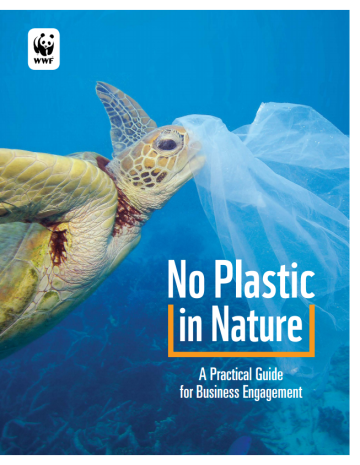
Plastic is found in every corner of the world — in the most remote environments, in our food and water, and in hundreds of wildlife species. Everyday plastic items that end up as waste in nature will take hundreds of years to degrade, negatively impacting ecosystems and their inhabitants in ways we are just beginning to understand.
Urgent action to halt decades of plastic pollution is necessary, but it will require coordinated collaboration on an unprecedented scale, since no single entity can successfully tackle this issue on its own. Governments, service providers, the public, and business must be involved in helping make the global material system more sustainable. Business has a crucial role to play, since it can not only exercise decision-making powers over its own actions but also engage the individual consumers it serves, and the public as a whole.
This report aims to provide guidance to businesses on how to engage on this global issue. Through this report, the World Wildlife Fund (WWF) aims to demonstrate how time-tested management practices, buoyed by novel collaborations, can help bring major shifts towards a better-functioning plastics system.
To successfully alleviate the potential harm that plastic pollution inflicts on our planet and its inhabitants, aligned action at all stages of the plastic life cycle is needed, with players working together in a committed manner. This report found that in addition to ensuring adequate basic waste management provisions in all geographies, three further strategies could contribute to and achieve this vision: 1) eliminate unnecessary plastics, 2) double global plastic recovery, and 3) shift to sustainable sources for the remaining plastic.
The analysis also shows that effective corporate action is centred on four activities:
Maximizing impact through strategic alignment, purposeful organizational design, and intense but selective collaboration;
Designing products, packaging, and distribution models to improve recycling and recovery rates and to ensure robust end markets for recycled materials;
Tailoring interventions to engage consumers; and
Improving and innovating the existing collection and recovery infrastructure and growing it further.
